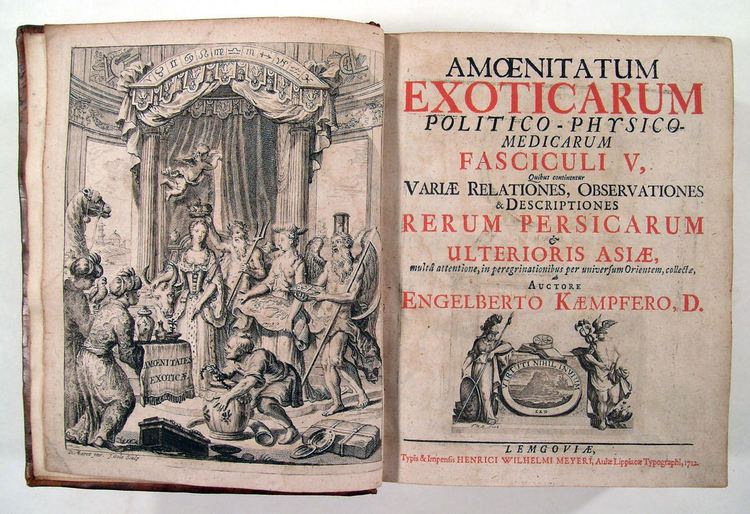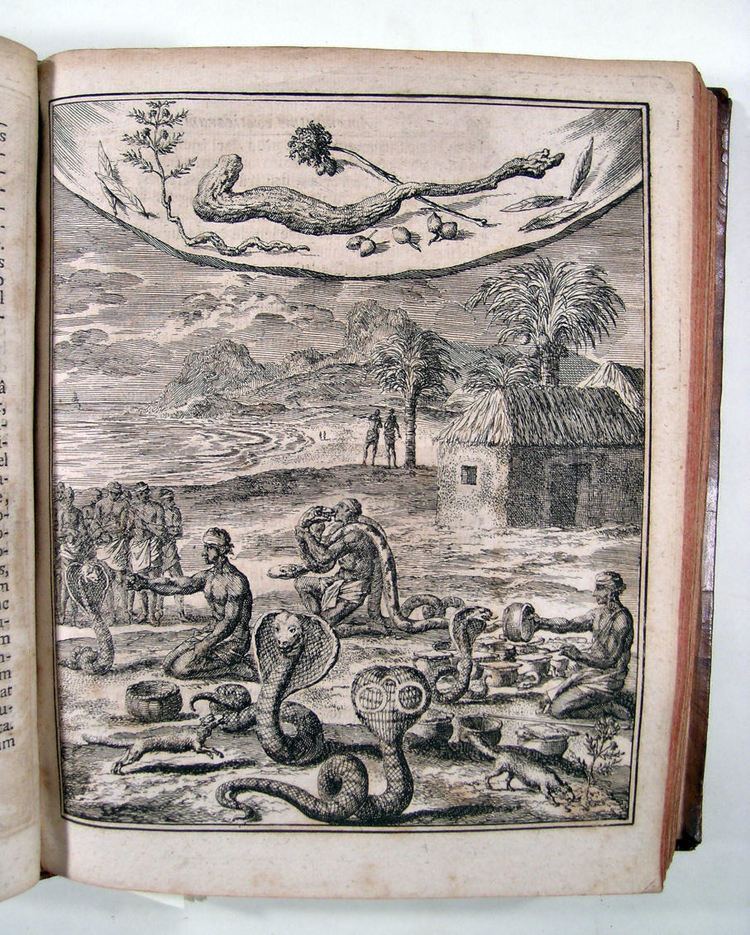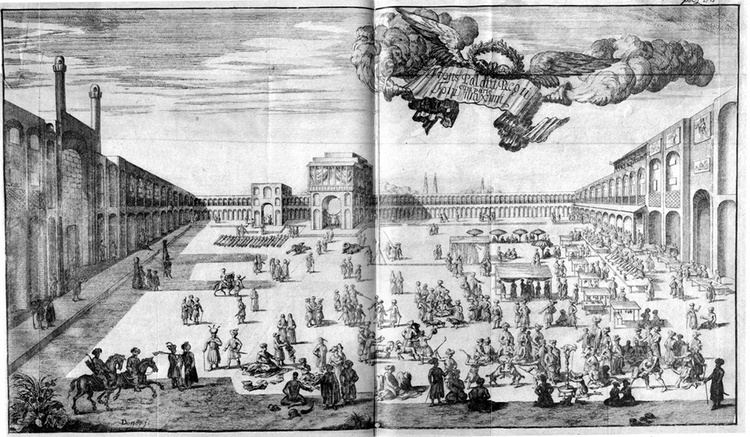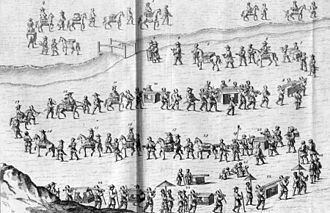Name Engelbert Kaempfer | Role Writer | |
 | ||
Books The history of Japan, Kaempfer's Japan, A description of the Kin, Exotic Pleasures: Curious s, Die Reisetagebücher | ||
Adrian and the big band of the engelbert kaempfer high school play beethoven
Engelbert Kaempfer (September 16, 1651 – November 2, 1716) was a German naturalist, physician, and explorer writer known for his tour of Russia, Persia, India, South-East Asia, and Japan between 1683 and 1693.
Contents
- Adrian and the big band of the engelbert kaempfer high school play beethoven
- What is Engelbert Kaempfer Explain Engelbert Kaempfer Define Engelbert Kaempfer
- Early life
- Persia
- Siam and Japan
- Return to Europe
- Manuscripts
- Kaempfers Works
- Literature on E Kaempfer
- References

He wrote two books about his travels. Amoenitatum Exoticarum, published in 1712, is important for its medical observations and the first extensive description of Japanese plants (Flora Japonica). His History of Japan, published posthumously in 1727, was the chief source of Western knowledge about the country throughout the 18th and mid-19th centuries when it was closed to foreigners.

What is Engelbert Kaempfer?, Explain Engelbert Kaempfer, Define Engelbert Kaempfer
Early life

Kaempfer was born at Lemgo in the principality of Lippe, Westphalia. His father was a pastor and his mother helped support the congregation. He studied at Hameln, Lüneburg, Hamburg, Lübeck and Danzig (Gdańsk), and after graduating at Kraków, spent four years at Königsberg in Prussia, studying medicine and natural science.
Persia

In 1681, Kaempfer visited Uppsala in Sweden, where he was offered inducements to settle. His desire for foreign travel led him to become secretary to the second embassy of the Swedish ambassador Ludvig Fabritius, whom Charles XI sent through Russia to Persia in 1683. Kaempfer's travelogue of this embassy was later published. He reached Persia by way of Moscow, Kazan and Astrakhan, landing at Nizabad 'in Dagestan' (though actually now in Azerbaijan) after a voyage in the Caspian Sea. From Shemakha in Shirvan, he made an expedition to the Baku peninsula, being perhaps the first modern scientist to visit the 'fields of eternal fire' around Baku. In 1684 Kaempfer reached Isfahan, then the Persian capital.

When after a stay of more than a year the Swedish embassy prepared to return to its homeland, Kaempfer joined the fleet of the Dutch East India Company (VOC) in the Persian Gulf as chief surgeon. In spite of fever caught at Bander Abbasi, he saw something of Arabia (visiting Muscat in 1688) and many of the western coastlands of India.
Siam and Japan
In September 1689, Kaempfer reached Batavia. He spent the following winter studying Javanese natural history. In May 1690 he set out for Japan as physician to the VOC trading post in Nagasaki. En route to Japan, the ship in which he sailed touched at Siam, whose capital he visited. He recorded his meeting with Kosa Pan, the Siamese Minister and former ambassador to France. In September 1690 Kaempfer arrived in Nagasaki, the only Japanese port then open to Dutch and Chinese ships.
Kaempfer stayed two years in Japan, during which time he twice visited Edo and the Shogun Tokugawa Tsunayoshi. He conducted extensive studies on local plants, many of which were published in his "Flora Japonica" (part of Amoenitatum Exoticarum). When he visited Buddhist monks in Nagasaki in February 1691, he was the first western scholar to describe the tree Ginkgo biloba. He brought some Ginkgo seeds back that were planted in the botanical garden in Utrecht. The trees have survived to the 21st century. (The "awkward" "–kgo" spelling appears to be an error Kaempfer made in his notes, a more precise romanization would have been "Ginkjo" or "Ginkio").
Kaempfer also collected materials and information on Japanese acupuncture and moxibustion. His treatise on the cure of colic (Japanese senki) using needles and his presentation of a Japanese "Moxa-mirror" had a considerable influence on the reception of Far Eastern medicine in 18th-century Europe.
During his stay in Japan, Kaempfer's tact, diplomacy and medical skill overcame the cultural reserve of the Japanese. He elicited much valuable information. In November 1692 he left Japan for Java.
Return to Europe
After twelve years abroad, Kaempfer returned to Europe in 1695, landing at Amsterdam. He was awarded a medical degree at the University of Leiden in the Netherlands.
Kaempfer settled in his native city of Lemgo, where he became the physician of the Count of Lippe. In Germany he published the book Amoenitatum exoticarum (Lemgo 1712). Among many other Japanese plants, it included an illustration of a camellia and introduced 23 varieties. It was notable for its description of the electric eel, acupuncture, and moxibustion. His systematic description of tea, as well as his other work on Japanese plants, was praised by Linnaeus, who adopted some of Kaempfer's plant names, such as Ginkgo.
In 1716, Kaempfer died at Lemgo. Most of his manuscripts and many objects from his collection are preserved in the British Library and the British Museum.
Manuscripts
At Kaempfer's death his mostly unpublished manuscripts were purchased by Sir Hans Sloane via George I's court physician Johann Georg Steigerthal and conveyed to England. Among them was a History of Japan, translated from the manuscript into English by Sloane's librarian John Gaspar Scheuchzer (1702–1729). It was first published at London, in 2 vols., in 1727. The original German (Heutiges Japan, Japan of Today) had not been published; the extant German version was translated from the English. Besides Japanese history, this book contains a description of the political, social and physical state of the country in the 17th century. For upwards of a hundred years, when Japan was closed to foreigners, it was the chief source of information for the general reader. In the 21st century it is considered to have some value. A life of the author is prefixed to the History. Kaempfer's original manuscripts are held by the British Library.
Most have been published since 2001: Engelbert Kaempfer, Werke. Kritische Ausgabe in Einzelbänden. Herausgegeben von Detlef Haberland, Wolfgang Michel, Elisabeth Gössmann.
